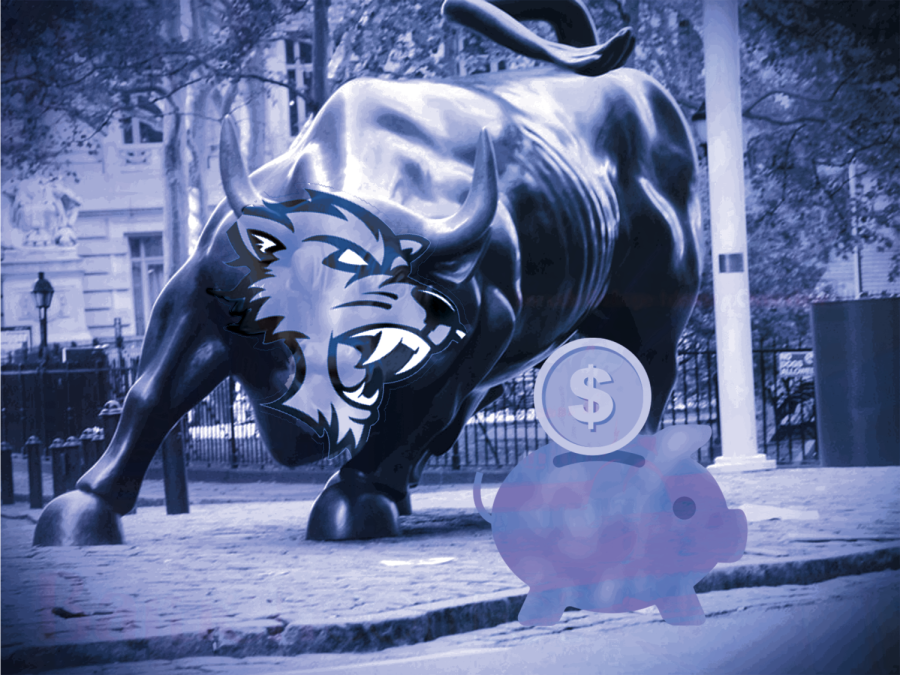Market Update 03/06/23
March 13, 2023
Markets were mixed between Feb. 28 and March 3 as investors attempted to price in the extent of Federal Reserve rate hikes.
Markets slid on Tuesday following a continuation of wary investor sentiment surrounding the possibility of a recession. This sentiment stems from a long list of voting members of the Fed’s Federal Open Market Committee who supported a hawkish stance against inflation. The Dow Jones Industrial Average fell 0.7%, the S&P 500 fell 0.3% and the Nasdaq composite fell 0.1%.
The 10-year Treasury note climbed to the largest level since November 2022, gaining almost 50 basis points in February alone. The 10-year yield slid by one basis point on Tuesday, closing at a value of 3.912%. When heading into a recession, higher yields indicate that investors seek a secure investment as opposed to the stock market.
The Conference Board, a global nonprofit think tank, announced that the consumer confidence index fell 3.1 points to 102.9 in February. The index measures future expectations of household consumption and savings based on economic conditions.
The three major indexes lost on Wednesday due to increasingly uncertain sentiments around high inflationary concerns. The Dow remained flat, the S&P 500 slid 0.5% and the Nasdaq slid 0.7%.
The Chicago Board Options Exchange Volatility Index lost 0.6%. Its volatility index is often used as a gauge of investor fear with values above $20 indicating high stock volatility and, subsequently, investor uncertainty.
The Purchasing Managers’ Index increased 30 basis points to 47.7 in February, indicating a rise in spending on raw materials and equipment. The index portrays the direction of economic movements with respect to manufacturing and service sectors.
The Fed’s voting members backed hawkish outlooks on Wednesday.
Minneapolis Fed President Neel Kashkari told Bloomberg News that he is “open-minded, at this point, about whether it’s 25 or 50 basis points.” His comments sent ripples through the markets with a majority of investors pricing in a 25-basis-point rate hike in the last couple of weeks.
By Wednesday’s close, the 10-year Treasury yield surpassed the 4% mark since November 2022 with a value of 4.006%. The two-year Treasury note reached 4.904% shortly, the highest yield since 2007, before finally plateauing at 4.891%.
Markets rose on Thursday following dovish sentiment expressed by Atlanta Fed President Raphael Bostic.
“Slow and steady is going to be the appropriate course of action,” Bostic said, according to Reuters.
It is worth noting that Bostic is not a voting member of the Fed this year. But, he will be a part of the Fed’s voting members list in 2024, which contributes to his credibility.
The Dow gained 1.1%, the S&P 500 gained 0.8% and the technology-heavy Nasdaq gained 0.7%. Major contributors to this movement were Intel Corp. and Microsoft Corp., which rose 3.4% and 2%, respectively.
The U.S. Department of Labor announced that jobless claims declined by 2,000 to 190,000 for the week that ended on Feb. 25. Jobless claims declining could harbor a hawkish Fed stance with numerous officials awaiting economic pain yet to be seen.
Stocks rose in defiance on Friday as Treasury yields fell from highs and essential economic data was released. The Dow rose 1.2%, the S&P 500 rose 1.6% and the Nasdaq rose 2.0%. The technology and consumer discretionary sectors were major contributors to this rise, each climbing 2.2%.
The three major indexes closed mixed on Monday as investors patiently awaited Fed Chair Jerome Powell’s congressional testimony on March 7. The Dow gained 0.1%, the S&P 500 gained 0.1% and the Nasdaq lost 0.1%.
Investors should brace for the possibility of a 50-basis-point hike for March as numerous Fed voting members dabble in a hawkish stance. Stocks that are hedged against general macroeconomic trends and market volatility may be a wise pick at this time.







